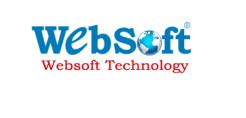In the dynamic landscape of asset finance, equipment leasing, and lending, the efficacy of reconciliation processes is paramount. Despite the technological advancements shaping the financial services industry, a recent survey conducted by a global consultancy firm underscores a concerning reality: a significant portion of asset finance firms continue to grapple with manual tasks in their reconciliation control processes.
According to the survey, a staggering 84% of companies within the global financial services sector heavily rely on manual tasks and spreadsheets for reconciliation, revealing a pervasive reliance on outdated methodologies. Compounding this issue, 86% of respondents express concerns over the transparency and standardization of their data, highlighting the critical need for transformative solutions.
This trend towards manual processes is not merely a matter of preference but reflects a broader industry challenge. Despite the clear imperative to streamline operations and enhance efficiency, many firms have yet to make substantial investments in modernizing their reconciliation practices.
Conducted with input from over 500 professionals across asset finance organizations in the US and UK, the study sheds light on the prevalent reliance on Excel spreadsheets for critical financial control processes. Notably, in the US, where 88% of respondents acknowledge this heavy dependence on spreadsheets, the issue is particularly pronounced.
Considering these findings, it becomes evident that reconciliation within asset finance needs a complete digital transformation. The status quo, characterized by manual processes and disparate data standards, is no longer sustainable in an increasingly complex and competitive landscape. Companies must embrace innovative solutions that leverage intelligent automation to digitize their reconciliation processes.
In this blog post, we will explore how intelligent automation can address the shortcomings of traditional reconciliation methods, offering a transformative asset finance management software that enhances efficiency, accuracy, and transparency. From mitigating risks to optimizing resource allocation, intelligent automation presents unparalleled opportunities for organizations to elevate their reconciliation capabilities and drive sustained growth in an evolving marketplace. Join us as we delve into the transformative potential of intelligent automation and its profound implications for the future of reconciliation in asset finance.
Unlocking Efficiency and Growth: The Power of Automated Reconciliation
As the digital economy expands and transaction volumes soar, the traditional reliance on spreadsheets for reconciliation is proving increasingly inadequate. The escalating complexity of regulatory obligations further exacerbates the shortcomings of manual processes, necessitating a change in basic assumptions towards automation.
The research underscores a critical need for heightened awareness around reconciliation’s transformative potential. By automating manual processes, businesses stand to achieve remarkable cost reductions and time savings, positioning themselves for sustained growth and competitiveness in a rapidly evolving landscape.
A notable revelation from the study is the dramatic increase in the number of asset finance firms anticipating a surge in compliance costs over the next year, doubling from 38% to 80% compared to 2023. This escalation underscores the urgency for organizations to adopt automated solutions that not only enhance compliance but also drive operational efficiency.
Half of the respondents recognize that higher levels of automation hold the key to significant time savings and support their growth objectives. Similarly, an equal percentage acknowledges the pivotal role automation plays in achieving growth objectives, while 45% highlight its potential to reduce operational costs.
In recent years, there has been a growing acknowledgment of the imperative for businesses to streamline operations to effectively navigate potential disruptions. However, the emphasis extends beyond mere survival; companies must seize opportunities to maximize profitability in today’s fiercely competitive environment.
Automation presents a transformative solution that aligns with this imperative, offering a pathway to efficiency, agility, and resilience. By harnessing the power of automation, organizations can not only navigate regulatory complexities but also unlock new avenues for growth and innovation.
In the following section, we delve into the specific ways in which automation can revolutionize the reconciliation process, driving tangible benefits and positioning asset finance firms for success in an increasingly digital world. Join us as we explore the untapped potential of automated reconciliation and its profound implications for businesses seeking to thrive amidst uncertainty.
Streamlining Reconciliation with Cloud-Native Asset Finance Software
In an era defined by digital transformation, the adoption of cloud-native, end-to-end asset finance management software emerges as a cornerstone for digital reconciliation processes. Leveraging the right asset finance software can streamline the entire reconciliation workflow, enhancing efficiency, accuracy, and agility.
Real-Time Data Accessibility
Cloud-native asset finance management software offers real-time access to critical financial data, enabling frictionless integration with reconciliation processes. By consolidating data from disparate sources into a centralized platform, organizations gain unparalleled visibility and control over their asset finance operations. This real-time accessibility eliminates delays and inaccuracies inherent in manual data entry, facilitating faster decision-making and proactive risk management.
Automated Reconciliation Workflows
End-to-end asset finance software empowers organizations to automate reconciliation workflows from start to finish. By leveraging intelligent algorithms and machine learning capabilities, the software can match transactions, identify discrepancies, and reconcile accounts with unprecedented speed and accuracy. Automated reconciliation not only minimizes the risk of errors but also frees up valuable resources, allowing finance professionals to focus on strategic initiatives that drive business growth.
Scalability and Flexibility
Cloud-native asset finance software offers scalability and flexibility to adapt to evolving business needs and regulatory requirements. Whether processing a handful of transactions or managing a vast portfolio of assets, the software can effortlessly scale to accommodate fluctuations in transaction volume and complexity. Additionally, cloud-based architecture enables smooth updates and enhancements, ensuring organizations stay ahead of industry trends and regulatory changes without costly infrastructure overhauls.
Enhanced Security and Compliance
With data security and regulatory compliance topping the agenda for asset finance institutions, cloud-native asset finance management software provides robust security measures to safeguard sensitive information. Built-in encryption, access controls, and audit trails ensure data integrity and confidentiality, mitigating the risk of fraud and unauthorized access. Moreover, the software facilitates compliance with industry regulations and reporting requirements, reducing the burden on compliance teams, and minimizing the likelihood of costly penalties.
Integrated Analytics and Reporting
Beyond reconciliation, cloud-native asset finance management software offers integrated analytics and reporting capabilities to derive actionable insights from financial data. Advanced reporting dashboards, customizable analytics tools, and predictive modeling empower organizations to identify trends, optimize asset performance, and confidently make data-driven decisions. By harnessing the power of data analytics, organizations can unlock new opportunities for revenue generation and operational efficiency.
The adoption of cloud-native, end-to-end asset finance software represents a transformative step towards streamlining the reconciliation process in asset finance. By providing real-time data accessibility, automated workflows, scalability, security, and advanced analytics, the right software solution can drive tangible benefits and position organizations for success in today’s competitive landscape. Embrace the power of technology to unleash the full potential of your reconciliation efforts and propel your business towards sustained growth and profitability.




